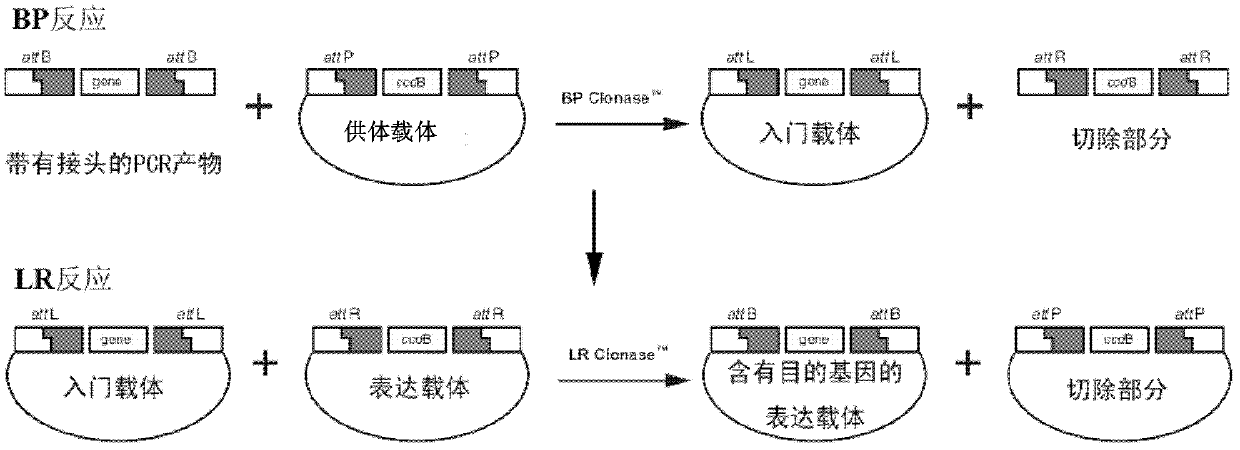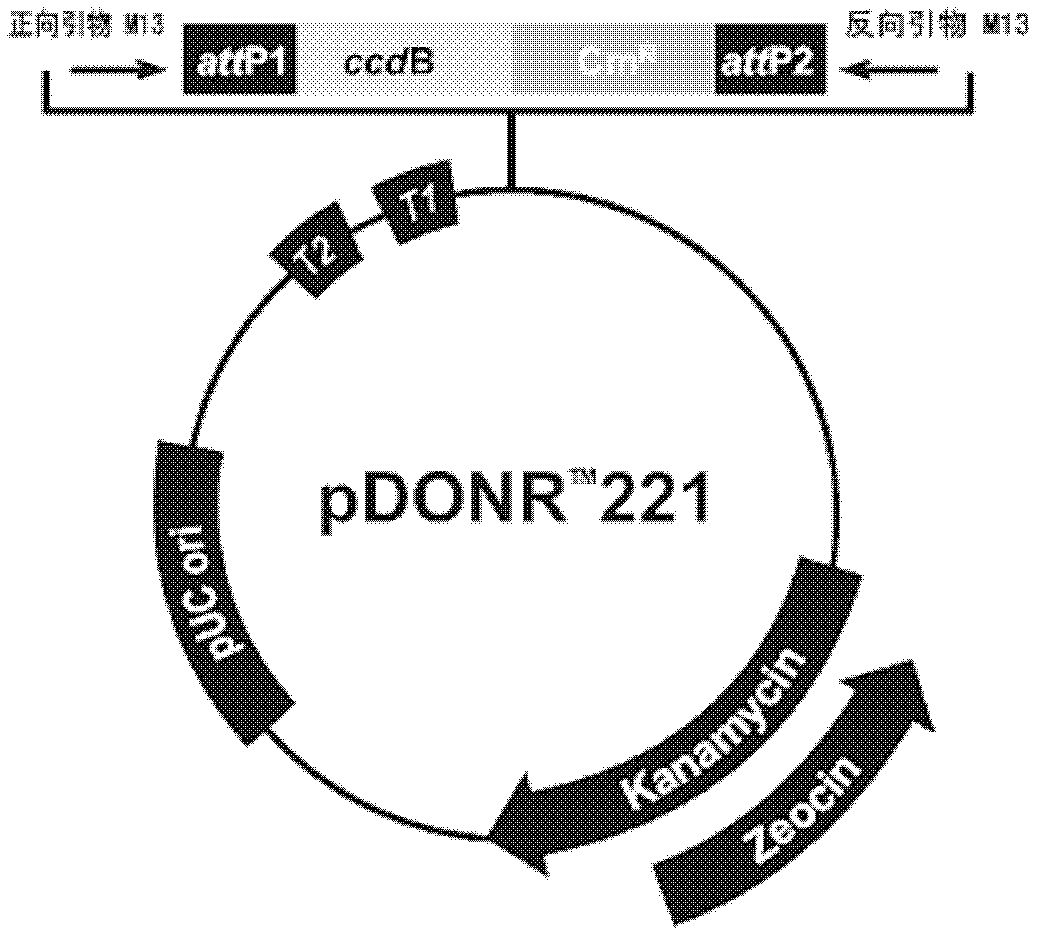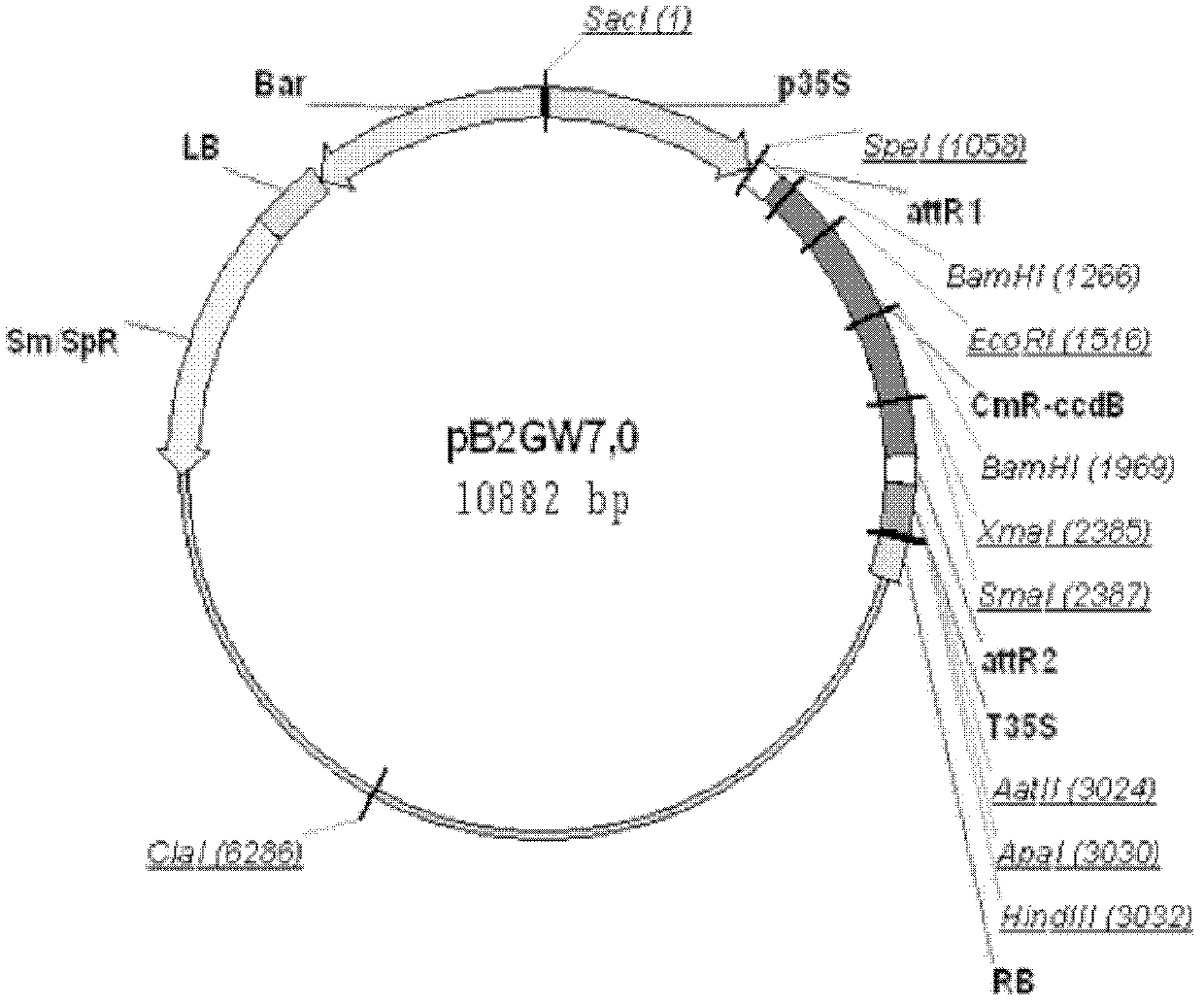Plant root hair development related protein TaRHD6, and coding gene and application thereof
A technology of encoding genes and genes, applied in the direction of plant gene improvement, application, plant peptides, etc., to achieve the effect of increasing root hair length, increasing plant biomass, and increasing root hair length
- Summary
- Abstract
- Description
- Claims
- Application Information
AI Technical Summary
Problems solved by technology
Method used
Image
Examples
Embodiment 1
[0044] Embodiment 1, the cloning of wheat TaRHD6 gene
[0045] The root system of Yangmai 158 that had been hydrocultured for 8 days was extracted by Trizol method to extract total RNA, and after purification, it was reverse-transcribed with M-MLV reverse transcriptase to obtain cDNA. Using this cDNA as a template, PCR amplification was performed with primers L: 5'-TCACAGAGCCTAGCTAGCTAC-3' and R: 5'-TCTGATCTTACACGTGCCGC-3'.
[0046] PCR reaction system (30μl): dH 2 O 5.4 μl, 2×GC buffer 15 μl, 10 mM dNTPs (2.5 mM each) 0.6 μl, 100 U rTaq (Takara) 0.3 μl, each primer 3 μl, DNA template 3 μl.
[0047] PCR reaction conditions: 94°C, 5min; 35 cycles: 94°C, 30s, 59°C, 30s, 72°C, 1min; last extension at 72°C for 10min.
[0048] The obtained PCR amplification product was electrophoresed in 1% agarose gel, and a fragment of about 1 kb was recovered, connected to pEGM-T vector (Promega) and transformed into Escherichia coli DH5α strain for sequencing. Sequencing results show that a ...
Embodiment 2
[0049] Embodiment 2, the construction of recombinant plant expression vector
[0050] Using the site-specific recombination of Gateway technology, the target sequence is transferred to the expression vector modified by Gateway (ie, the target vector) through the two-step reaction of BP and LR. Gateway technology is based on the well-researched λ phage site-specific recombination system (attB×attP→attL×attR). The two reactions of BP and LR constitute the Gateway technology ( figure 1 ). The BP reaction utilizes a recombination reaction between an attB DNA fragment or expression clone and an attP donor vector to create an entry clone. The LR reaction is a recombination reaction between an attL entry clone and an attR destination vector. LR reactions are used to transfer a sequence of interest to one or more destination vectors in parallel reactions. The donor vector used in this example is pDONR TM 221, the expression vector is pB2GW7.0, and its structure diagram is as foll...
Embodiment 3
[0076] Embodiment 3, wheat TaRHD6 gene transformation Arabidopsis
[0077] 1. Construction of recombinant Agrobacterium
[0078] Take the recombinant plant expression vector pB2GW7.0-TaRHD6 prepared in Example 2 to transform Agrobacterium tumefaciens GV3101 competent cells, and select and culture in YEB solid culture containing 50 μg / ml spectinomycin and 100 μg / ml rifampicin at 28°C Pick the positive clone and carry out the plasmid, and carry out PCR detection with the primer L and R of the full-length cDNA sequence of the amplified wheat TaRHD6 gene in embodiment 1; The recombinant Agrobacterium tumefaciens was named GV3101 / pB2GW7.0-TaRHD6.
[0079] 2. Obtaining transgenic Arabidopsis
[0080] 1) Vernalize the wild-type seeds of Arabidopsis thaliana Col-0 (Arabidopsis thaliana Columbia) at 4°C for 72 hours, sow them in MS medium at 22°C / 18°C, 15h light / 9h dark, and humidity Cultivate in 60%-70% of the culture room, and transplant it into a planting pot mixed with nutrient so...
PUM
 Login to View More
Login to View More Abstract
Description
Claims
Application Information
 Login to View More
Login to View More - R&D
- Intellectual Property
- Life Sciences
- Materials
- Tech Scout
- Unparalleled Data Quality
- Higher Quality Content
- 60% Fewer Hallucinations
Browse by: Latest US Patents, China's latest patents, Technical Efficacy Thesaurus, Application Domain, Technology Topic, Popular Technical Reports.
© 2025 PatSnap. All rights reserved.Legal|Privacy policy|Modern Slavery Act Transparency Statement|Sitemap|About US| Contact US: help@patsnap.com



